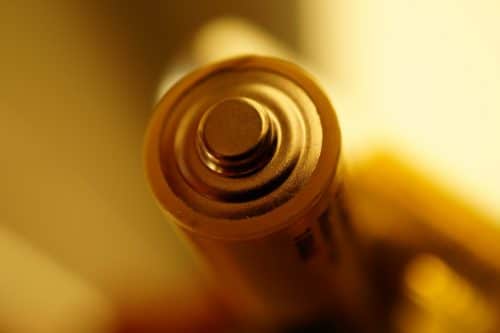Electrochemical cells will be able to absorb carbon from the atmosphere and use it to generate electricity

To stop global warming, it is not enough to reduce greenhouse gas emissions. We must also remove some of the carbon dioxide that is already in the atmosphere. The good news is that there are many ways to do this. The bad news is that these methods usually require huge amounts of energy.
An ideal technology for removing carbon from the atmosphere would be one that generates electricity instead of consuming energy. In a study published in July 2016 In the article In the journal Science Advances they described Wajdi a-Sadat וLinden Orcher, both researchers from Cornell University, a structure of an electrochemical cell that captures carbon dioxide.
The positive pole (anode) of the battery is made of metallic aluminum, a cheap, common and easy-to-process material. The negative pole (cathode) is made of porous carbon through which the researchers flowed a mixture of gaseous oxygen and carbon dioxide. The aluminum, oxygen and carbon dioxide react with each other inside the battery, a reaction that produces electricity and aluminum Oxalate. Sadat and Archer say that during the period of activity of the battery they built, whose voltage is 1.4 volts, one kilogram of carbon dioxide reacted for every kilogram of aluminum.
In addition, the chemical by-product obtained in the battery, aluminum oxalate, which contains the absorbed carbon, also has an economic value. The global demand for oxalates, which are used as cleaning and bleaching agents, reaches 230,000 tons per year, and every ton that comes from battery by-products is a ton that does not need to be produced in a factory that emits carbon into the atmosphere. If you include in the calculation the total savings in carbon, [including that emitted in the production of aluminum - the editors] the batteries capture 3.52 kilograms of carbon dioxide for every kilogram of aluminum used in their production. "When you take into account the carbon dioxide balance, it turns out that these batteries achieve good results," explains Archer.
Archer says the battery they designed is still a long way from being integrated into useful technology. First they must show that the technology is economically viable and can be implemented on a large scale. If they manage to do this, Archer envisions batteries that will one day be installed in power plants and car exhausts: "That way, instead of releasing the carbon dioxide into the environment, we use it," he says.

7 תגובות
It must be assumed that the cleaning action of the oxalates also emits CO2 gas, so the profit is derived from the production of oxalates that emits CO2 into the atmosphere, to create oxalates that absorb CO2 from the atmosphere. Very nice.
We do not give up our principles. 20 Israelis received a Nobel Prize. Even at work you don't tell the boss everything you think.
The benefit of showing the world what Israel is like through Nobel is greater than always saying what you think.
A young tree consumes 6 kg of co2 per year, a 10-year-old tree consumes close to 22, which is more worthwhile?
Yosef: Yes, as a scientist, justice and truth are the things that should guide you. Whether it is in science or whether it is in private life. Not ready to accept funds from countries that support lies. Today it is a political lie, tomorrow it is a scientific lie. Agreeing to live with a lie is a steep slope.
The energy that the battery actually produces by turning metallic aluminum into aluminum oxalate.
But making metallic aluminum is a process that emits carbon dioxide into the atmosphere.
The production of excess battery components is also a process that emits...
Therefore, in the final balance, such batteries will probably not benefit the carbon dioxide balance.
According to the laws of thermodynamics, it is very difficult (impossible) to produce energy from carbon dioxide, because carbon dioxide is a very stable compound with a very low enthalpy.
Two seconds on Wikipedia reveals that aluminum production requires enormous amounts of energy.
There is Professor Hadi al-Saadat of electricity in the USA. I wonder if they are related. Arab researchers in leading faculties in the world are a common phenomenon. What is worrying is the relative decrease in Jewish researchers, and the fact that due to our comments to the Swedes, it is not expected that we will receive a Nobel Prize in the coming years, after 13 Israeli Nobels. It is of course not important. It is important that we are right. In the same way, our comments to Germany and Belgium may reduce research funding from the Union, which is almost the only engine for the academies - of course this is not important. Justice is important.